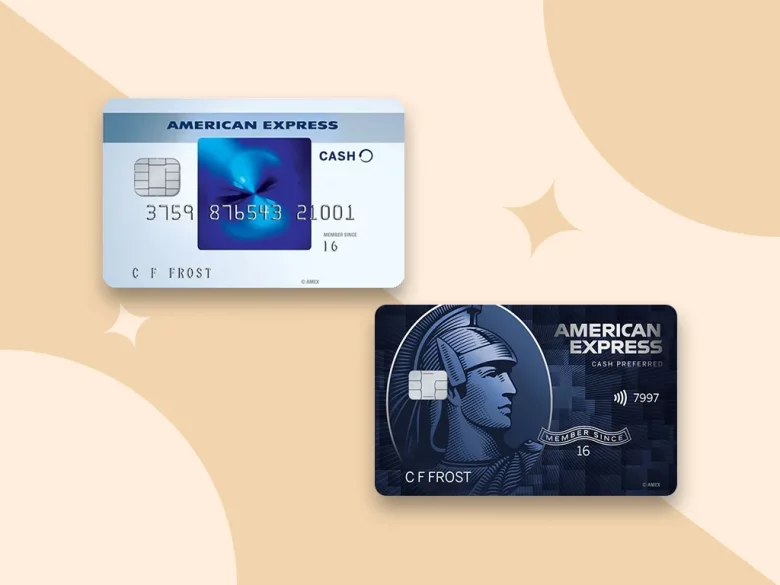The Blue Cash Preferred® Card from American Express and the Blue Cash Everyday® Card from American Express are two popular credit cards that offer cash back rewards. These cards provide cardholders with the opportunity to earn cash back on their everyday purchases. Understanding the differences between these credit cards can help consumers make an informed decision when choosing the right card for their financial needs.
The Amex Blue Cash Preferred card offers a range of benefits, including higher rewards rates in key spending categories such as U.S. supermarkets, select U.S. streaming subscriptions, transit, and U.S. gas stations. On the other hand, the Amex Blue Cash Everyday card offers similar rewards rates at a slightly lower level. While both cards have their own advantages, it’s essential for consumers to evaluate their spending habits and preferences to determine the best fit for their lifestyle.
With the Amex Blue Cash Preferred card, cardholders can earn a generous cash back percentage in categories like U.S. supermarkets, select U.S. streaming subscriptions, and transit. These higher cash back rates can significantly contribute to more substantial savings over time. On the contrary, the Amex Blue Cash Everyday card offers lower cash back rates in these categories but remains attractive for individuals who prefer a card with no annual fee.
Both credit cards come with welcome offers, with the Amex Blue Cash Preferred card offering a higher statement credit compared to the Amex Blue Cash Everyday card. Additionally, cardholders of both cards can enjoy the convenience of redeeming their cash back rewards for statement credits, gift cards, and purchases on Amex’s online rewards mall.
It’s essential for consumers to carefully consider the benefits, rewards rates, annual fees, and welcome offers of both cards before making their decision. By comparing these factors, individuals can determine which card aligns better with their spending habits and financial goals.
Key Takeaways:
- Amex Blue Cash Preferred and Blue Cash Everyday are credit cards offering cash back rewards.
- Blue Cash Preferred has a $95 annual fee but offers higher rewards rates in key spending categories.
- Blue Cash Everyday has no annual fee but slightly lower rewards rates in the same categories.
- Both cards have welcome offers of statement credits after meeting spending requirements.
- Consider personal spending habits and annual fee preferences to choose the best card.
Welcome Bonus and Rewards Rate Comparison
When comparing the Blue Cash Preferred card and the Blue Cash Everyday card, it’s important to consider the welcome bonus and rewards rates offered by each card.
The Blue Cash Preferred card offers a welcome bonus of $250 statement credit after spending $3,000 in the first six months. On the other hand, the Blue Cash Everyday card offers a welcome bonus of $200 statement credit after spending $2,000 in the same time frame. Both cards provide a substantial welcome bonus that can offset a part of the annual fee for the Blue Cash Preferred card.
In terms of rewards rates, the Blue Cash Preferred card comes out on top in several categories. It offers 6% back at U.S. supermarkets, 6% back on select U.S. streaming subscriptions, and 3% back on transit and U.S. gas stations. The Blue Cash Everyday card, on the other hand, offers 3% back at U.S. supermarkets, 3% back at U.S. gas stations, 3% back on U.S. online retail purchases, and 1% back on all other purchases.
Here’s a side-by-side comparison of the welcome bonus and rewards rates:
| Welcome Bonus | Rewards Rates | |
|---|---|---|
| Blue Cash Preferred | $250 statement credit after spending $3,000 in the first six months |
|
| Blue Cash Everyday | $200 statement credit after spending $2,000 in the first six months |
|
As shown above, the Blue Cash Preferred card offers a higher welcome bonus and rewards rate compared to the Blue Cash Everyday card. However, it’s important to factor in the annual fee of $95 for the Blue Cash Preferred card. Depending on your spending habits and priorities, one card may be more beneficial than the other.
Annual Fee and Other Features Comparison
In this section, we will compare the annual fee and other features of the Blue Cash Preferred card and the Blue Cash Everyday card. These factors are essential considerations when choosing the right credit card for your needs.
An Annual Fee that Makes a Difference
One of the primary differences between these two cards is the annual fee. While the Blue Cash Preferred card charges an annual fee of $95, the Blue Cash Everyday card has no annual fee. This distinction can significantly impact your overall costs and should be a key factor in your decision-making process.
Introductory APR and Duration
Both the Blue Cash Preferred and the Blue Cash Everyday cards offer an introductory APR of 0% on purchases and balance transfers. However, the duration of the introductory period differs between the two cards. The Blue Cash Preferred card offers a 12-month introductory APR period, while the Blue Cash Everyday card extends this period to 15 months. This discrepancy in duration is an important consideration if you plan to carry a balance or transfer existing debt to the card.
Foreign Transaction Fee
When it comes to foreign transactions, both cards have a foreign transaction fee of 2.7%. This fee applies to any purchases made outside of the United States and can add up, especially if you frequently travel internationally. If you frequently use your credit card abroad, it’s important to consider this fee and its potential impact on your spending.
Cash Back Rewards and Redemption Options
Both the Blue Cash Preferred and the Blue Cash Everyday cards offer cash back rewards that can be redeemed for statement credits, gift cards, and purchases on Amex’s online rewards mall. The specific cash back rates and categories vary between the two cards, and these distinctions can influence which card is more beneficial for your spending habits and preferences.
An Informative Table for Easy Comparison
| Features | Blue Cash Preferred | Blue Cash Everyday |
|---|---|---|
| Annual Fee | $95 (with $0 intro annual fee for the first year) | No annual fee |
| Introductory APR | 0% for 12 months | 0% for 15 months |
| Foreign Transaction Fee | 2.7% | 2.7% |
| Cash Back Rewards | Varies by category (e.g., 6% at U.S. supermarkets, 6% on select U.S. streaming subscriptions) | Varies by category (e.g., 3% at U.S. supermarkets, 3% at U.S. gas stations) |
As seen in the table above, the Blue Cash Preferred card has a higher annual fee compared to the Blue Cash Everyday card. However, it also offers more generous cash back rewards in certain categories. The decision between the two cards ultimately depends on your spending habits and financial goals.
Conclusion
In conclusion, when choosing between the Amex Blue Cash Preferred and Blue Cash Everyday credit cards, it is essential to consider individual spending habits and preferences. The Blue Cash Preferred card offers higher rewards rates in various categories and a more substantial welcome bonus, making it an attractive option for those who frequently spend on U.S. supermarkets, select U.S. streaming subscriptions, transit, and U.S. gas stations. However, it’s important to note that this card comes with an annual fee of $95 (with a $0 intro annual fee for the first year).
On the other hand, the Blue Cash Everyday card does not have an annual fee, which may be beneficial for individuals who prefer to avoid extra costs. While the rewards rates are slightly lower compared to the Blue Cash Preferred card, offering 3% back at U.S. supermarkets, U.S. gas stations, and U.S. online retail purchases, this card is still a compelling choice for everyday spending.
To determine which card is the best fit for their needs, consumers should carefully assess their spending patterns in U.S. supermarkets, U.S. gas stations, and other categories. Additionally, considering the preference for an annual fee or no fee will play a significant role in making a well-informed decision. Ultimately, the choice between these two Amex credit cards boils down to personal preferences and financial goals.



